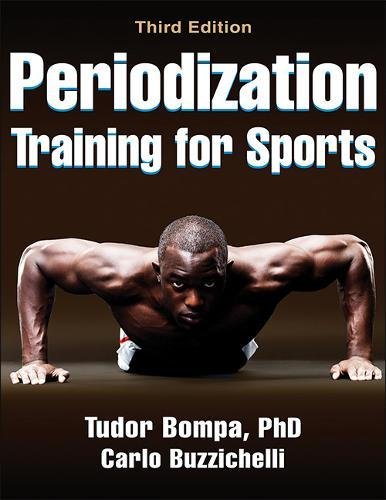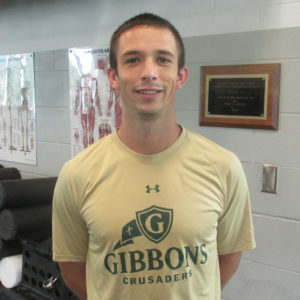
Chapter 2, Part 2: Biomotor Development
In the first part of this blog (CLICK HERE TO READ PART 1) , I discussed the details of periodization as it had to do with classifying different aspects of a program and attempting to utilize them in a manner that is appropriate for the goals during that period of the annual plan.
By definition, Bompa has detailed phases that attempt to develop the athlete specific to that focus.
As a post-collegiate decathlete at the tail end of our general preparation phase, I can promise you that these phases are by no means exclusive to one phase by its definition, and there are appearances of a variety of stimuli throughout each cycle. Our preparatory phase did begin at a higher volume than we currently maintain. The intensity was slightly lower, and the specificity was also lower than our current cycle. However, after a short two week ramp-up back to training, we were squatting heavy, we were power cleaning, and we were sprinting maximally. Our repetition schemes allowed for a more hypertrophic response. Our sprints entirely less than 40m, often with resistance of some sort; this suggests a strong concentric bias. Our recovery days included plyometric exercises that created localized fatigue, general strength and weight circuits that were intentionally designed to create a small hypertrophic effect, as well as continue to develop our aerobic abilities and have a positive energy system response towards recovery. As we have progressed over the past 3 cycles, fatigue continued to develop. Our maximum strength became a major focus of our training, while continuing to hit power via the Olympic movements, shifting our sprints from 3 entirely concentric days to include 1 eccentric focused day a week with 2 concentric focused days, and we began to practice specific skill by introducing technical events. As you read that, it is clear we are checking a lot of different boxes. We are hitting various different points along the force-time curve.
We are transitioning out of general prep and into specific prep by introducing regressions of different technical events. As we have functioned on a high-low-high design, our highs have become ‘higher’ (more intense) and our lows have gradually lowered. Below are two workouts; the first is from Monday of the 3rd week of our 2nd cycle. The second is from Monday of the 1st week of our 3rd cycle. It shows the small adjustments that were made in plyometrics, resistance and sprint adjustments, and introduction of multi-throws and eccentric work utilizing a kBox.
As I’ve experienced and observed the development of our program, I have recognized a few very important things: 1) A coach must understand ways to vary general preparation. Our days would have become monotonous after 2 weeks if we were simply doing the same 4 exercises at different loads, speeds, reps and sets. This is especially true when volume accumulation and hypertrophy are intentions of your programming. Rather than hitting squats and push ups 3 different times during our general strength circuits, our coach programmed things like plié squats, slow incline push up, decline push up, staggered push up and squats and a wide array of core exercises that all had variations. There are different intentions for including each of these, however, from an athlete’s perspective I now recognize how crucial it is to switch things up. 2) We progressed every day of general prep, the ‘lows’ weren’t that low and they were meant to serve as prehab, or as I’ve come to refer to it ‘bulletproofing’. If we were to try to progress to the next cycle without appropriate prep, we would have had a true Achilles heel exposed. Survival as a post-collegiate decathlete that needs to improve significantly to be nationally competitive requires doing things correctly.
The big things, like appropriate programming and trusting the process by training with intent, must be well managed.
A good coach/athlete dynamic allow this to happen. Below is an example of a ‘low’ day within our current program. The first is from Tuesday of the 3rd week of the 2nd cycle. The second is from Tuesday of the 1st week of the 3rd cycle. The progressions highlight a slight shift again. Specifically, we transitioned to a general endurance circuit that included 2 60-second runs including approximately 700m of total volume, to a circuit that included 5 30-second runs, which results in running 100-200 more total meters. Even in our extremely general aspects of training, we shift towards a more specific development. The general strength exercises we do during those circuits are important, however increasing our running volume will allow us to transition from these general endurance circuits to a more specific race modeling workout in the coming cycles. You may also notice that we removed skipping and short approach long-jump take-offs. This is because we have shifted to more intense bounding two days a week and have begun to work on full approach rehearsals while also including the short approach long-jump during a different part of the week. I should also note that we have begun to include remedial discus and javelin workouts on alternating weeks and become more specific with our shot-put technical practices. The reasoning for a greater focus on shot and quicker development is because we will compete in shot-put starting in December and throw it all year, we won’t throw discus or javelin until the spring and including it allows us to develop the fundamental needs of the event over time.
Cycle 2 Week 3 Tuesday workout
Cycle 3 Week 1 Tuesday workout
There are a plethora of details and nuances within this program that I haven’t discussed and might have completely missed as a young athlete/coach. However, what I have been able to highlight is that periodization of training is crucial to the successful development of athletes. My coach’s ability to manage the important aspects of the training plan are outstanding. The detailed planning and adjustments he makes were beyond me prior to entering the program. However, the principles remain the same. Our initial focus was on preparing the body to enter the program, As an athlete who is somewhat past initial development, I took a short off-season and it wasn’t explicitly necessary to enter a full phase of anatomical adaptation. Hypertrophy was a significant portion of our initial cycles and while it has slowly phased out, it is still included in certain parts of the program. Maximum strength has become a primary player during the last cycle and a half and will remain crucial to our programming all year. In terms of power, we have included it since we began training. Power cleans or another Olympic movement/regression are included every Monday, Wednesday, and Friday. Even this early in the season, we have slowly begun to transition to more specific strength and this progression will continue as we enter our season. This transition will not seem immediate but there is good argument to be made that heavy, full range squats, are specific so athletic movement. However, we will maneuver and adjust multiple movements to become more specific over time.
I will likely revisit these blogs in the spring to evaluate phase 4 and 5 by Bompa’s definitions. For now, our general prep is transitioning to specific. The indoor season starts in just over 3 weeks and the season promises to be a bright one.

Devin Cornelius
GibbonsSTRENGTH Assistant Coach
Sport Performance Coach at Athletic Lab
USA Decathlete Sponsored by MorlandSTRENGTH
Rockin’ Refuel BOGO Special! November 15-29!
Buy One Case, Get One FREE! $18 for TWO Cases (24 units)
Contact coach@morlandstrength.com to purchase
“The views, opinions, and judgments expressed in this message are solely those of the authors and peer reviewers. The contents have been reviewed by a team of contributors but not approved by any other outside entity including the Roman Catholic Diocese of Raleigh.”




